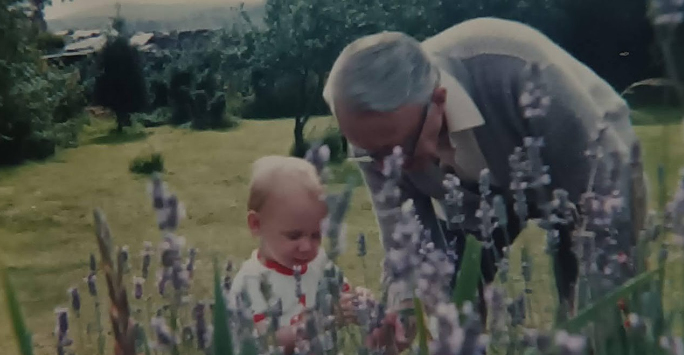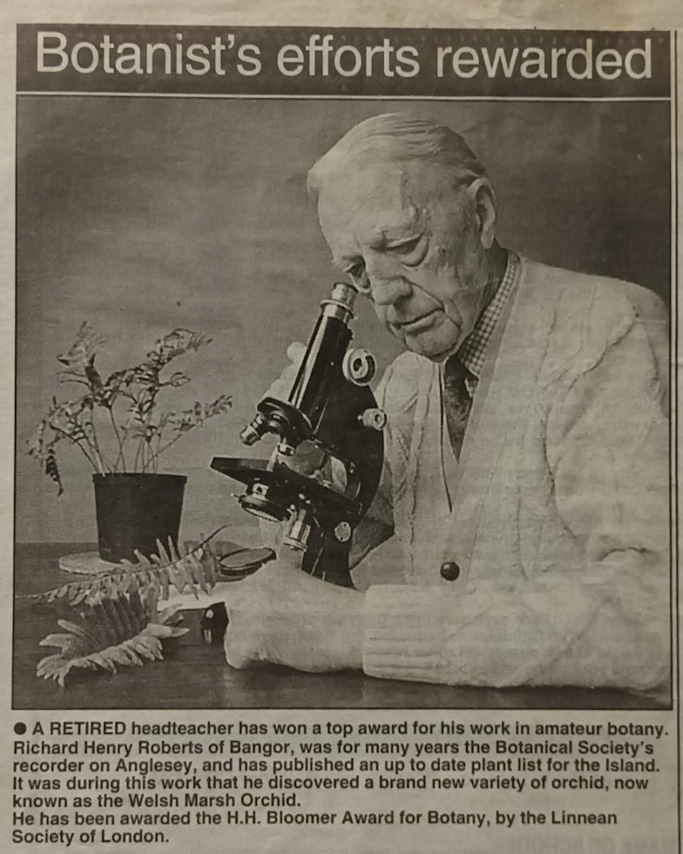
Dr Elinor Chapman, a Lecturer in the School of Biosciences, describes how a recent news item helped her reflect on what inspired her lifelong interest in science.
One Saturday in May 2024, I turned on Radio 4 to an item about re-introducing a plant to Eryri (Snowdonia). I didn’t catch the plant name but thought “I’m sure my Taid (Welsh for grandfather) would’ve loved this story”. I opened the BBC News website, hoping to find out more. I found the article and plant name: Rosy Saxifrage, but as I scrolled down, I was breath taken as I read: “In 1962 a teacher and conservationist called Dick Roberts ...”. Dick Roberts was my Taid. 21 years after he passed away, he’d made the BBC news website.
My happiest memories as a child were always with my Taid. My Taid grew up on the Welsh hillside where he became acquainted with the beauty of wildflowers. He was a humble man, who spent hours trawling fields in Anglesey inventorying flowers. I knew he’d had some influence in the botanical world as he had a hybrid horsetail named after him. Horsetails have existed since dinosaur times and look a bit like a bottle brush cleaners, as ukwildflowers.com says “He was known for his work on orchids … so it's slightly ironic that famous for work on the most exotic and attractive of the world's plants he should have his name attached to one of the dullest.”

As a child, I visited my Taid most Saturdays and was always excited when he had the microscope out. He’d be doing a “chromosome count” of Polypody, his favourite fern. I loved looking at this microscopic world, of different shapes and colours and was captivated at the idea that all inheritance patterns could be packed so tightly into something so small. We’d wander around the garden, finding leaves and petals and then gently dissect them to examine.
Aged 8, what did I want for Christmas? A microscope. My parents duly obliged and purchased a plastic microscope from a toy shop. My Taid made them return the “toy” and he promptly ordered me a “proper” microscope. He inspired a lifetime interest in the microscopic biological world. My enjoyment of biochemistry as an undergraduate and later PhD in leukaemia and postdoctoral researcher positions (particularly the microscopy of neutrophils) all originate from these times.

So, what can I learn from this story? One of my roles at the University of Liverpool is to develop practical classes, and reflecting on how formative playing with the microscope was during my childhood, has surely given me renewed enthusiasm for giving students’ opportunity to “play” and learn by doing. Certainly, one of the practical classes students will undertake will be microscopy. I’m keen to get students to use their powers of observation. Having an eye for detail is important as a scientist. It was surely noticing a “piece of a plant that had washed down a path”, which saved the Rosy Saxifrage.